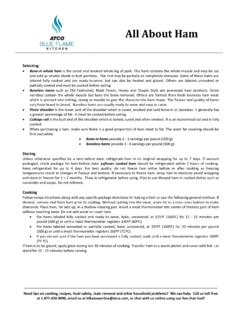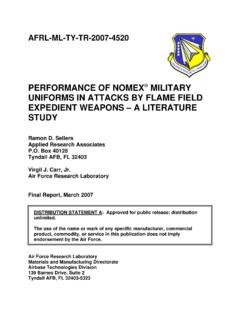Transcription of FLAME SPREAD/SMOKE DEVELOPMENT VALUES …
1 APPLICATION BULLETIN TS15-0909 Page 1 of 1 FLAME SPREAD/SMOKE DEVELOPMENT VALUES astm E84 astm E84 is the most common test method specified for determining the FLAME spread and smoke generation characteristics of an insulation material. The data obtained from the test provides information on the FLAME spread and smoke DEVELOPMENT of a material under a specific set of conditions and is useful for comparison purposes only. Most building codes require a maximum 25/50 ( FLAME SPREAD/SMOKE DEVELOPMENT ) rating for a material used in an air handling plenum or as duct or air handling equipment liner. Rating is typically required at the thickness used. These areas are the most stringent requirements, with lesser requirements for other areas of the building and typically no requirement for outdoor applications.
2 Code requirements are minimum standards; specifiers may require ratings that are more stringent than code requirements. astm E84 is similar to other test methods commonly called out: NFPA 225, UL723, and CAN/ULC S102-M88. CAN/ULC tests the sample on the floor of the tunnel rather than the ceiling as is done with the other tests. CAN/ULC requires this method be used for thermoplastic materials. NOMACO INSULATION products (elastomeric and polyolefin) meet astm E84 25/50 rating requirements as listed below. Elastomeric Insulation* FLAME Spread Rating < 25 at 1-1/2 and below smoke DEVELOPMENT Rating < 50 at 1-1/2 and below Polyolefin Insulation FLAME Spread Rating < 25 at 1 and below smoke DEVELOPMENT Rating < 50 at 1 and below








